Inventor of the Teplushka , and Double bell masonry heater.
From Material provided by Alla Podgoridnikova in 2006, and arranged by Alexander Batsulin.
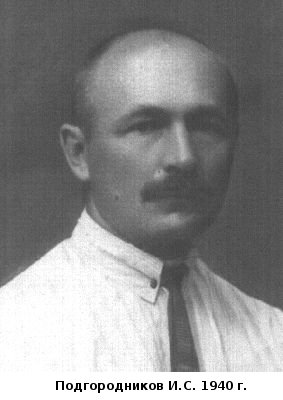
Podgoridnikov was born in the city of Magiliov Belorussia into a family of carpenters on 29 Sept 1886. On finishing college in Magiliov he moved to the Russian capital to study at the Institute of Technology. He left the Institute just before the outbreak of the Revolution and found employment at St Pietersbourgs Putilovski Shipyards.
In 1919 he set off for Crimea , with the intention of taking a ship to Western Europe where his skills as an engineer would be needed. Traveling on foot, and with little funds, he was forced to work as a shepherd, lumberjack, and assistant stove builder.
At the time Western Ukraine was in the troughs of a 3-way conflict, the Maknovishna fiercely resisting the Denekinist counter-revolution, and the Red army lurking on the periphery ready to pounce on the victor. On the outskirts of Elizabethgrad Podgoridnikov was apprehended by a Red Army patrol. Accused of being a Denekinist spy he avoided summary execution only by chance.
After being freed he abandoned his plan of reaching the Black Sea ports and went to stay with acquaintances in Elizabethgrad. It was here that he met his future wife. After some months they left Ukraine for the Belarusian city of Schlov, where he applied for a job as a heating engineer in a local paper factory.
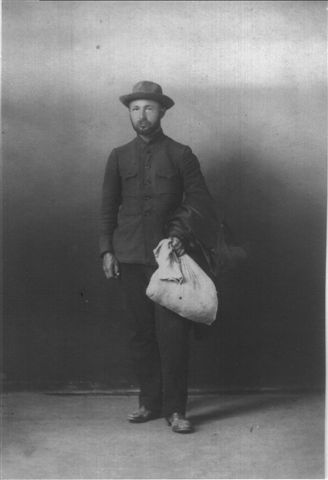
While traveling Podgoridnikov had remarked that the traditional Russian Ovens, used both for cooking and heating, were largely inefficient. They had poor thermal retention, and due to being built on an elevated hollow wooden platform, did not heat the lower portions of the room. His analytical nature prompted him to think about improving these ovens, which had not evolved for several centuries.
By 1926 Podgoridnikov was devoting all his spare time to the improvement of traditional stoves and ovens. It was at this time that he began corresponding and sharing ideas with Vladimir Grum-Grjimailo the renowned metallurgist, and author of The Hydraulic Theory of Gas Movement.
He communicated with Grum-Grjimailo by post, occasionally traveling to Moscow to discuss specific problems in person.
In 1928 Podgoridnikov was invited by Grum-Grjimaio to work at The Stal’ Proekt Institute (Steel Project Institute.) in Moscow where he lived in the local workers accommodation. He was assigned to the design of metallurgic furnaces, but passed most of his free time with Grum-Grjimailo trying to improve the common popular masonry heater.
The basis of their work was the single bell heater developed by Grum-Grjimailo. Though making improvements, and removing many disadvantages the essential form of their efforts remained the single bell.
After Grum-Grjimailo’s death in 1928 Podgoridnikov stayed with the Stal’ Proekt and continued his work on the popular heater.
Evidence of his enthusiasm could be seen at his dacha where he built many experimental heaters, some in the house and barn, and many outside in the open.
The result of his exhaustive investigation was his belief that the efficient heater must be double and not single bell. This has since been considered a revolutionary point in heater design.
During 1955, in Semipalatinsk, the traditional heaters in all public buildings I.e. schools, hospitals etc were replaced by double bell heaters. The result was an immense saving of fuel through out the municipality. This had been attempted many times by others but to little avail and it was only the application of Grum-Gerjemilos theory of free gas movement that solved the problem.
One of the inventor's’s main aims was the improvement of the traditional Russian oven that could be found in almost every home.
During 1929 and 1930 Podgnoridkov designed a version of the Russian oven that had active radiating surfaces from top to bottom, calling it Krestianskaya Teplushka or peasants heater. This was widely recognised as a major improvement on the Russian oven.
After the Great Patriotic War while on a business trip to inspect a prototypical metallurgical furnace at Zaporojie in Ukraine he became seriously ill with a mysterious lung disuse.
Some time after this Podgoridnikov left the Stal’ Proekt to work at the National Academy of Utilities. Here between 1946 and 1948 he participated in the design of prefabricated, continuous burn heaters. The result of his efforts was the appearance of a new model of tiled pre-fab heater called the AKX9, which was mass-produced in the Katuar plant near Moscow.
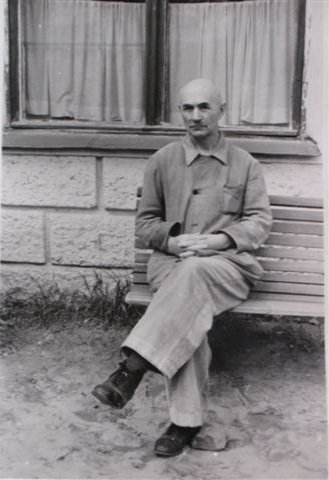
While working at the academy of Utilities, Podgneridkov acquired a PHD in general heater design, with specific emphasis on indoor heat distribution analysis. Though The PHD was the result of 24 years of work, most of his recent investigations were done with the assistance of hydraulic models, prepared and celebrated by the Science Academies M.V. Kirpichov. The result of his research confirmed the validity of heater design based on the free gas movement theory.
The last paragraph of his PHD emphasises this.
“By my work I can show that the design of the popular masonry heater using the new principals of free gas movement of V. Grum –Grjimailo , which are in turn base upon the initial work of M.V. Lomonosov, should be a National priority.”
Unfortunately not all his ideas were put into practice.
He was thinking about writing a detailed general study of masonry heaters, but on the 17th Jan 1958 died.
Not only the series of modified Teplushka but also double bell heaters, and heaters with cook stoves , as well as continuous burn heaters, were widely accepted by the population.
In the first editions of his books he gave his mailing address, inviting feedback .
The best proof of the quality of his design were the hundreds of letters received by him in the mail from stove builders and citizens who built his heaters in all regions of USSR.
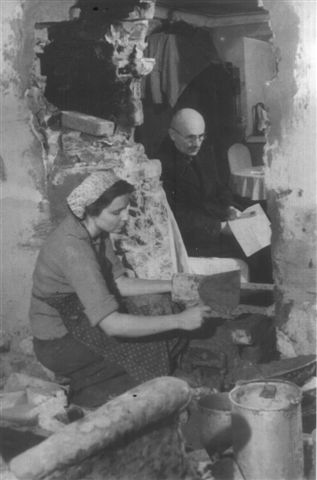
During his life he wrote several books containing diagrams, and text supported construction sequences. He was also awarded 19 State Certificates of invention.
Except for one specific model of Teplushka most of the heaters he designed were not included in the posters and manuals of the Ministerial of Construction, printed for distribution amongst the general population. For official purposes Podgoridnikov was considered but a simple craftsman.
After his death his daughter Alla edited his books. His son Mikhil used some stories from his fathers personal life in the fictional books he wrote.
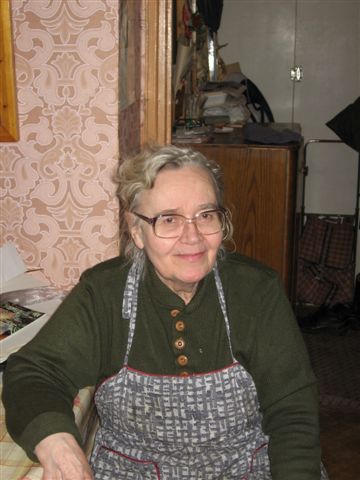
Alla Podgoridnikova photographed by Alexander Batsulin at her Moscow apartment, during the account of her fathers life.
Alla Podgoridnikova was an electrical engineer, at the Kurchatov’s Institute of Radioactivity She died age 83 in the summer of 2009.
Note: For complete biography see Russian version.